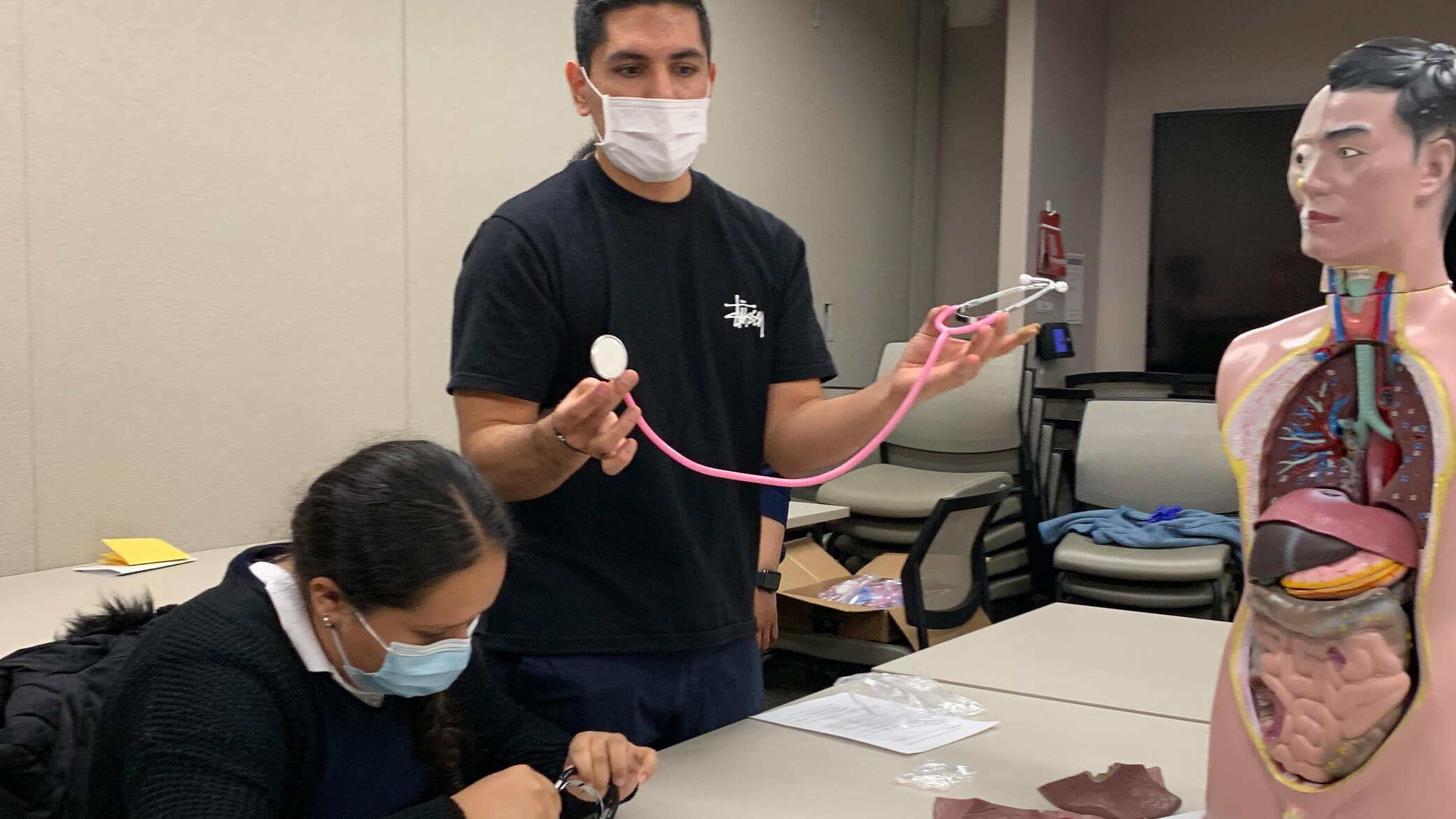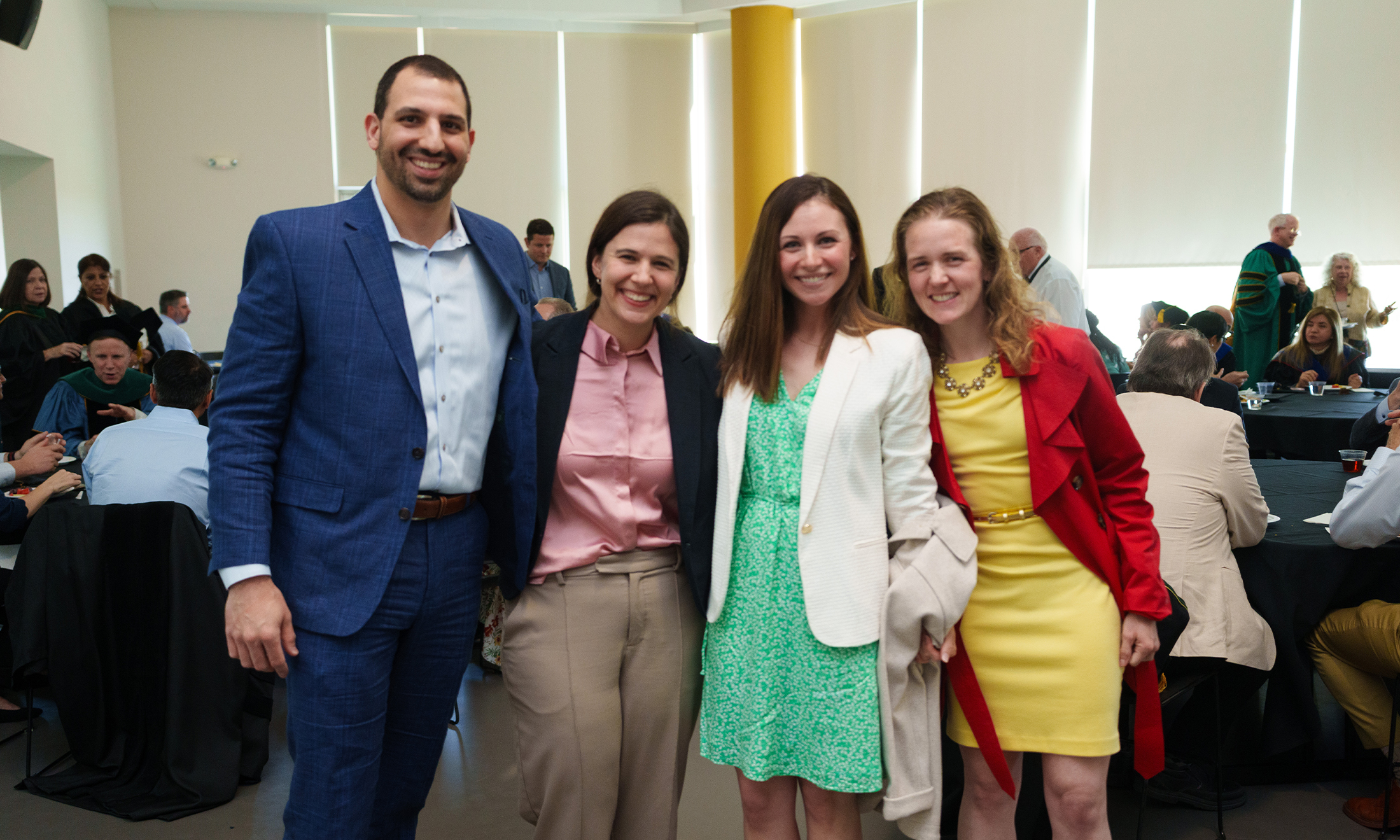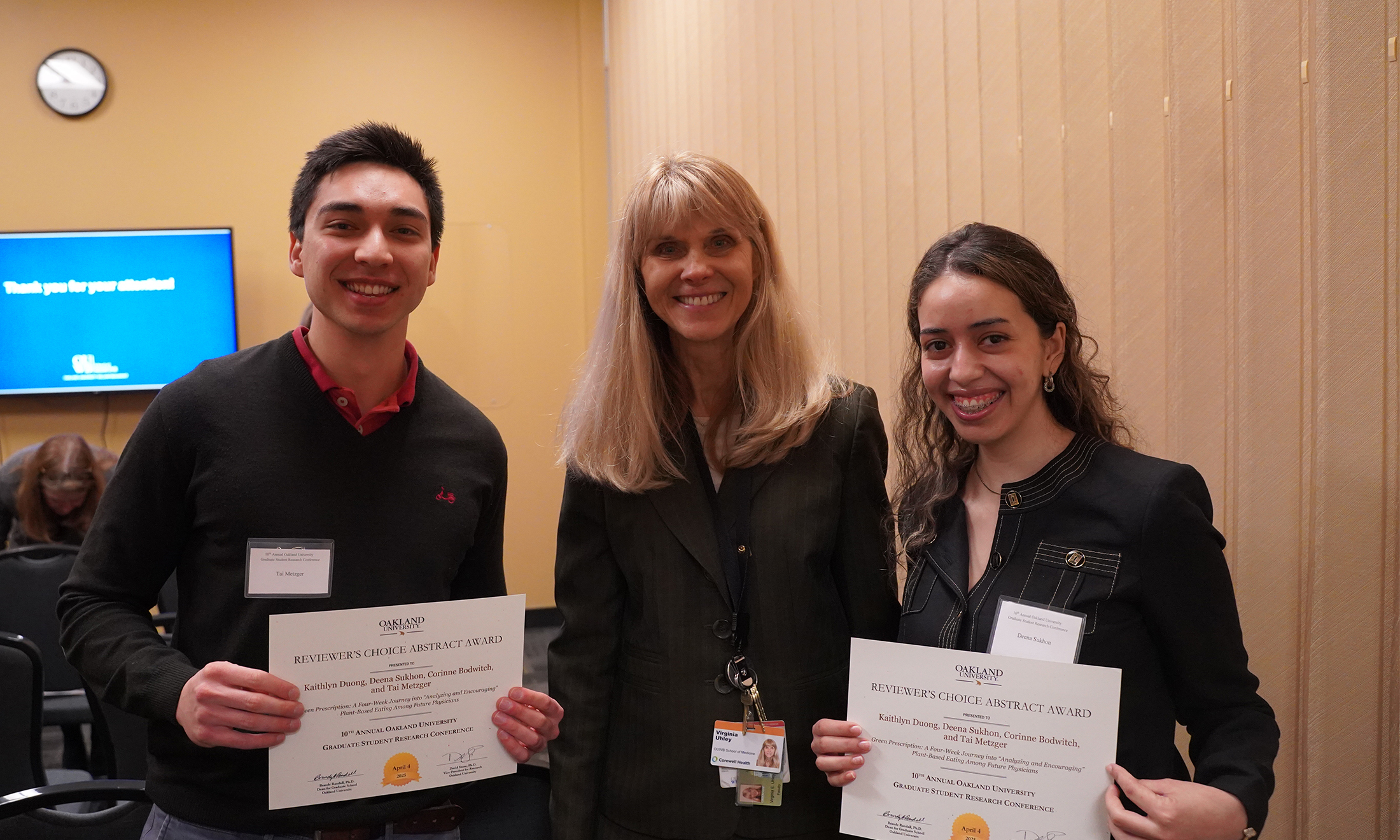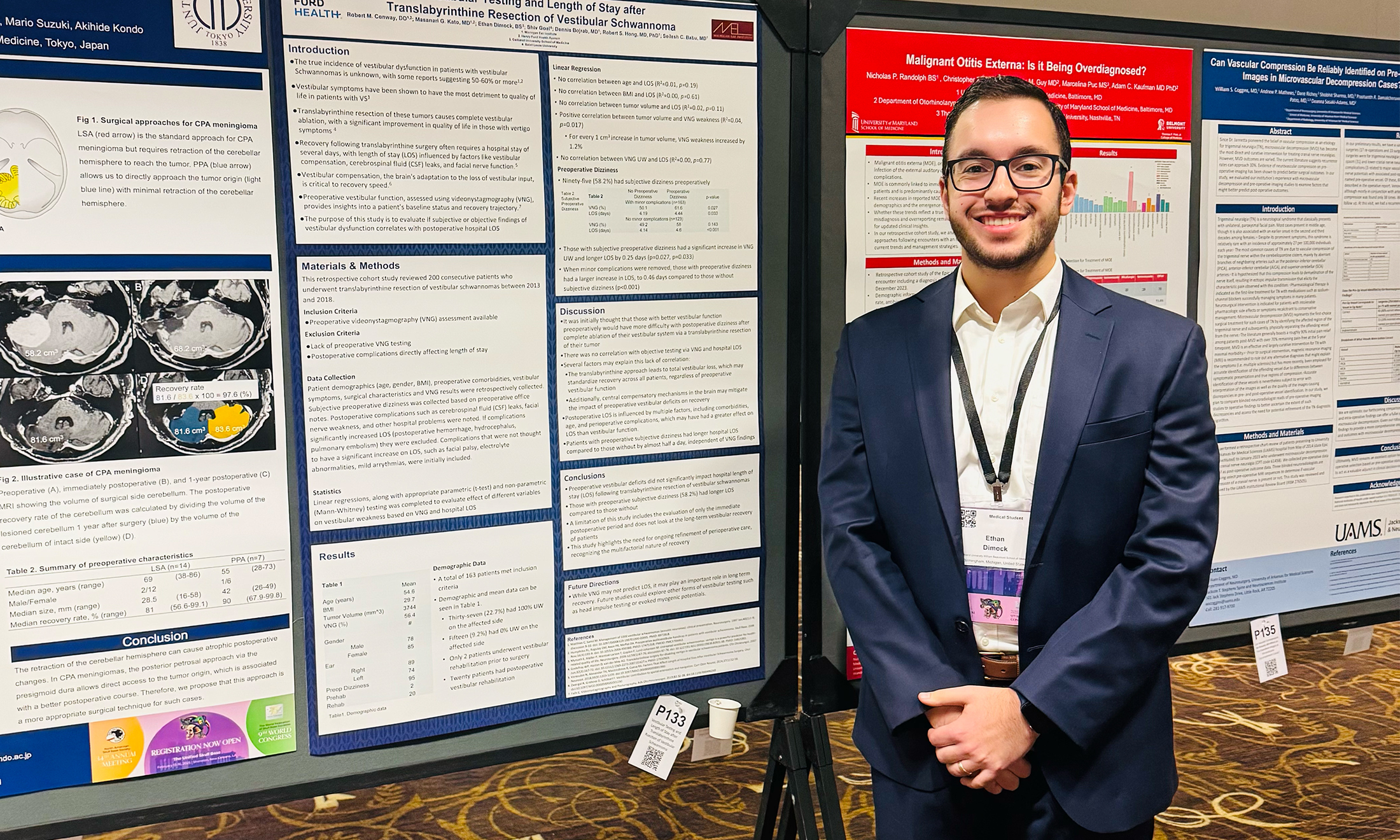Pathways to Pediatrics
OUWB student orgs collaborate to cultivate interest in medicine for school-age children
For Andrew Santos, rising M3, sharing his passion for medicine with middle school students from International Technology Academy (ITA) brought him a sense of fulfillment and a realization that he can be a role model to youths who may not think they can pursue a medical career.
“Growing up I slowly began to realize that I am underrepresented in medicine. I believe it is important to expose a career in medicine to communities that traditionally do not have the opportunity to learn about it,” said Santos. “I wanted to be involved because it offered me an opportunity to engage with the Hispanic/Latinx community around OUWB.”
| More from OUWB |
|
OUWB opens facilities for Ypsilanti-based military unit as body donor program ramps up Study led by OUWB student highlights needs of polio survivors |
Santos, a member of the Latino Student Medical Association, was invited this spring to collaborate with the Pediatrics Interest Group and the Student National Medical Association for Pathways to Pediatrics Day at OUWB. The activity was made possible by the grant the students from the Pediatrics Interest Group received from the American Academy of Pediatrics.
The medical students prepared three activity stations, each with a hands-on component and a particular purpose for explaining 1.) blood structure, 2.) the cardiovascular system, and 3.) the social determinants of health.
At the blood slime station, Tulasi Tullari, rising M3, engaged the students by asking questions while the students mixed their own glue slime, which represented plasma. They added red food coloring for the red blood cells, a few white beads for the white blood cells, and finally they sprinkled in glitter to represent the platelets.
The lesson taught students about different components of blood and about the proportion of the different types of cells in the blood. Tullari provided answers while explaining the purpose for each of the components. (The answers: Red blood cells bring oxygen from your lungs to all the cells in your body. White blood cells help you fight off germs so you don’t get sick; Platelets help the blood clot when you get a cut.)
ITA student Essence Joseph, 14, rising 9th grader was excited about coming to OUWB to be at the “actual” medical school. She says she likes medicine because she someday wants to help other people.
Ideally all of the activities were designed to get students interested in science and the human body.
“We try to make it fun and memorable for the students,” said Asia Susko, M.D., Class of 2022.
Lub-dub is the sound the heart makes
At the cardiovascular system station, torso models displayed the anatomy of the heart. The objective was to teach the structure and function of the heart while learning about the role the heart plays with distributing blood to the body.
Santos worked this station, where they also wanted the young visitors to notice that the heart is split into four chambers, and that the sound of a heartbeat comes from the closing of the heart valves. Once the ITA students understood how the heart works, they were given a stethoscope to listen to their own heartbeat.
“I think the students enjoyed using the stethoscopes the most. It was wonderful seeing their faces light up when they heard their heartbeat,” said Santos.
“It also made me feel great to share what I am learning in medical school with people from my community.”
The middle school students also learned about the social determinants of health.
At this station, they were asked to identify the five factors that affect their health and then draw a pie chart on how important they think each of the factors were to their health. The breakdown of the five factors included health behaviors (what people eat, how much they exercise) social and economic factors (what people have access to) physical environment (air quality, clean water) health care (access to a doctor, health literacy), and genes (genetic conditions such as diabetes). The medical students included discussions about equality and equity by sharing case studies.
ITA student Lizabeth Montoya, rising 9th grader, appreciated the opportunity to be in the same room with the medical students.
“I wanted to ask a lot of questions and get recommendations on classes to take in high school. I am intrigued and definitely have an interest in medicine,” said Montoya.
She says pediatrics is an area that she would like to learn more about. Her favorite activity of the day was the blood slime table where she enjoyed learning about the types blood cells.
Santos said he felt inspired at the end of the day.
“Medical school is filled with a lot of exams and studying. Being able to take a day off and give back to my community always reminds me of why I embarked on this journey and provides me with the motivation to keep going,” said Santos.

 July 06, 2022
July 06, 2022
 By Michele Jasukaitis
By Michele Jasukaitis










